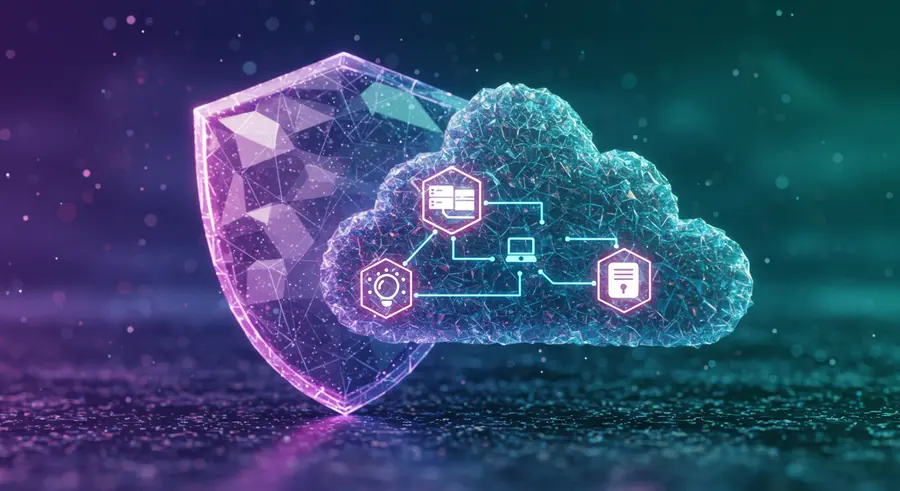Appearance

Welcome, security champions and cloud enthusiasts! 👋 Today, we're diving deep into a critical topic for modern web development: securing serverless and microservices architectures. These two powerful paradigms have revolutionized how we build and deploy applications, offering unprecedented scalability and flexibility. However, with great power comes great responsibility, and these architectures introduce unique security considerations that demand our attention.
🚀 The Rise of Cloud-Native Architectures
Both serverless computing and microservices have become cornerstones of cloud-native development.
- Microservices break down monolithic applications into smaller, independent, and loosely coupled services. Each service can be developed, deployed, and scaled independently, fostering agility and resilience.
- Serverless architectures (often implemented using Function-as-a-Service or FaaS) abstract away the underlying infrastructure entirely. Developers write code, and the cloud provider handles all the provisioning, scaling, and management of servers.
While they share common goals of scalability and agility, their distinct characteristics lead to different security postures.
🔐 Unpacking the Security Landscape
Securing these dynamic environments requires a nuanced approach.
Microservices Security: Navigating the Distributed Maze
With microservices, you're dealing with a network of interconnected services, each potentially exposing its own API. This distributed nature introduces several security challenges:
- Inter-service Communication Security: How do your services talk to each other securely? This involves robust authentication and authorization mechanisms (e.g., OAuth 2.0, mTLS), and ensuring data in transit is encrypted.
- API Security: Each microservice's API needs to be protected against common web vulnerabilities like injection attacks, broken authentication, and excessive data exposure (OWASP API Security Top 10 is your friend!).
- Container Security: If you're using containers (like Docker) for your microservices, securing the container images themselves (vulnerability scanning, least privilege in containers) and the container orchestration platform (like Kubernetes) is paramount.
- Data Security: Ensuring data at rest and in transit is encrypted, and proper data governance policies are in place across all services.
Serverless Security: A New Frontier
Serverless functions, while seemingly "server-less," still run on servers managed by your cloud provider. The security responsibility shifts, but doesn't disappear. Key considerations include:
- Least Privilege Principle: This is perhaps the most critical. Grant serverless functions only the minimum permissions they need to execute their specific task. Over-privileged functions are a massive attack vector.
- Input Validation and Sanitization: Just like any web application, serverless functions are susceptible to injection attacks. Rigorous input validation and sanitization are essential to prevent malicious data from being processed.
- Function-Level Controls: Implement granular access controls for each function. Who can invoke it? What resources can it access?
- Dependency Management: Third-party libraries and dependencies can introduce vulnerabilities. Regularly audit and update your dependencies.
- Secrets Management: Never hardcode sensitive information (API keys, database credentials) directly into your function code. Use dedicated secrets management services.
- Logging and Monitoring: Comprehensive logging and real-time monitoring are vital for detecting and responding to security incidents quickly.
🤝 The Synergy of Security Best Practices
Many security principles apply universally to both architectures. Integrating security early in the development lifecycle is crucial. This is where DevSecOps comes into play, a practice we explored in detail in our article on DevSecOps: Integrating Security into DevOps. By embedding security practices from design to deployment, we can build more resilient and trustworthy systems.
✨ Practical Tips for a Secure Cloud-Native Journey
- Automate Security Testing: Integrate static application security testing (SAST), dynamic application security testing (DAST), and software composition analysis (SCA) into your CI/CD pipelines.
- Regular Audits and Penetration Testing: Periodically audit your cloud configurations and conduct penetration tests to identify potential weaknesses.
- Network Segmentation: Isolate services and functions as much as possible to limit the blast radius of a breach.
- Identity and Access Management (IAM): Implement strong IAM policies for both human users and service accounts.
- Incident Response Plan: Have a well-defined incident response plan in place to handle security breaches effectively.
- Stay Updated: The cloud security landscape evolves rapidly. Stay informed about the latest threats, vulnerabilities, and best practices.
By adopting a proactive and comprehensive security strategy, we can unlock the full potential of serverless and microservices architectures while safeguarding our applications and data.
What are your biggest security challenges in serverless or microservices? Share your thoughts and experiences in the comments below! 👇